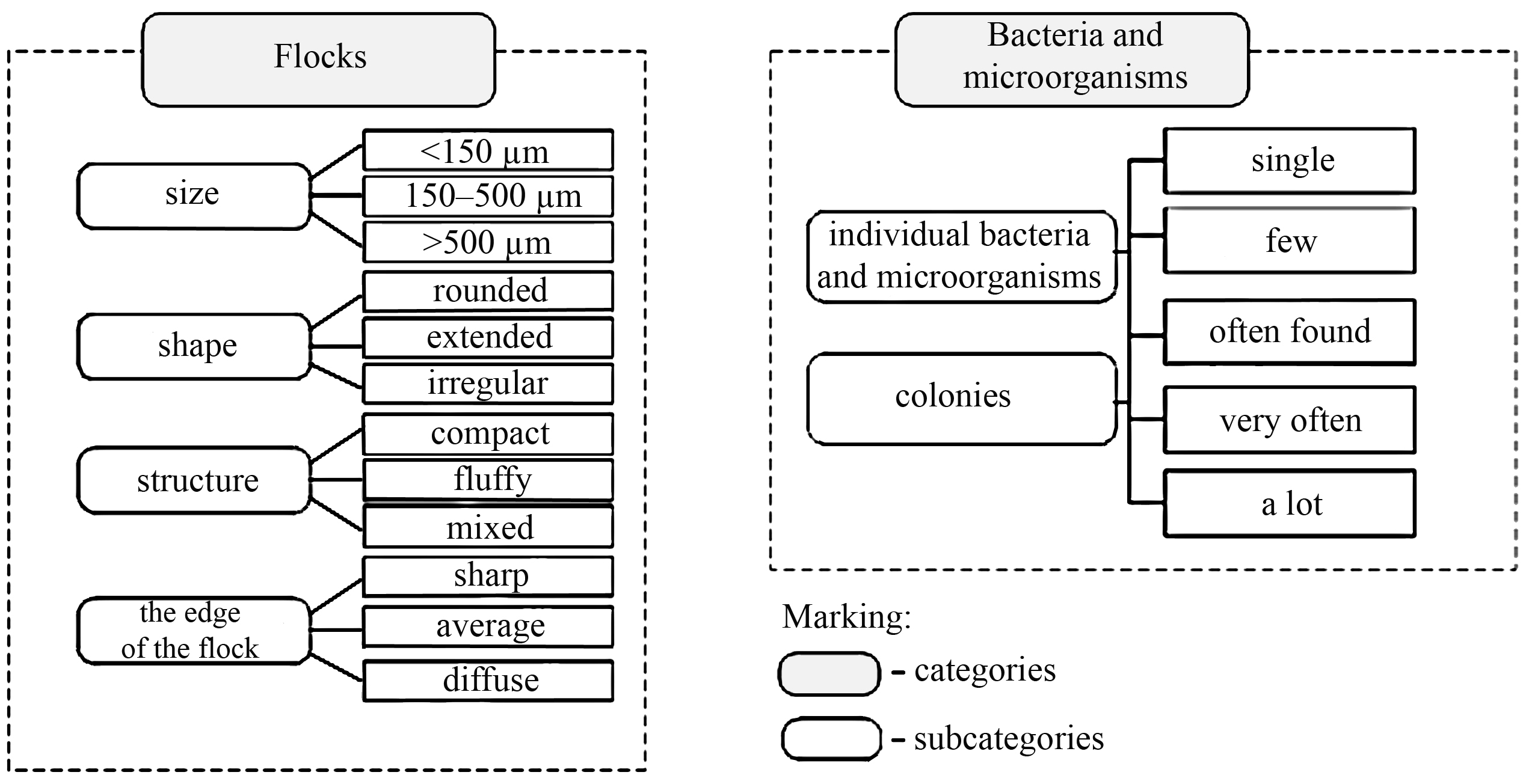Analysis of the activated sludge composition using artificial neural networks
DOI:
https://doi.org/10.15587/2706-5448.2023.277184Keywords:
activated sludge, biological treatment, wastewater, convolutional neural networks, image processing modelsAbstract
The object of research is electron microscopic images of activated sludge, which were used to train a convolutional neural network. An important task of the process of biological wastewater treatment is the prompt determination of quantitative and qualitative changes in activated sludge, as well as the assessment of the impact of the identified changes on the efficiency of the treatment. Microscopic examination, which is a traditional tool for controlling the quality of the water-sludge mixture, does not allow to quickly detect the deterioration of the activated sludge, which can lead to its degradation, and in difficult cases – to the death of the sludge. Violation of the microbiological composition of sludge leads to improper formation of flocs, violation of the process of formation of flakes, filamentous or sludge swelling, toxicity, etc. The combination of artificial intelligence methods with existing methods of quality control of activated sludge will increase the reliability and validity of the assessment of the quality of biological treatment.
A proposed methodology for analyzing the state of activated sludge using convolutional neural networks. For the purpose of training the network, images of activated sludge were prepared, which were classified into two categories – «flocs» and «bacteria with microorganisms». There are 4 subcategories in the «flocks» category: size, shape, structure, edge of the floc; in the category «bacteria with microorganisms» there are 2 subcategories: «individual bacteria and microorganisms» and «colonies». Data sets of 250, 500 and 1000 images were created for each category. The task of learning the image processing model and the criteria for evaluating the success of learning are formulated. The task of training the network was to find such a recognition function that, with a given degree of accuracy, approximates the unknown recognition function over the entire domain of its definition. The accuracy of image recognition is chosen as a learning success criterion. The model training results show that the image recognition accuracy reaches 99.98 %, and the training quality is affected by the sample size and training duration. The trained model can be used as a fast and efficient tool to detect problems with activated sludge.
References
- Astrelin, I. M., Ratnaweera, H. (Eds.) (2015). Physico-chemical methods of water treatment. Water resources management. Water Harony Project.
- Baldwin, D. D., Campbell, C. E. (2001). Short-Term Effects of Low pH on the Microfauna of an Activated Sludge Wastewater Treatment System. Water Quality Research Journal, 36 (3), 519–535. doi: https://doi.org/10.2166/wqrj.2001.028
- Baldwin, D. D., Campbell, C. E. (2001). Short-Term Effects of Low pH on the Microfauna of an Activated Sludge Wastewater Treatment System. Water Quality Research Journal, 36 (3), 519–535. doi: https://doi.org/10.2166/wqrj.2001.028
- Sanginova, O., Tolstopalova, N., Bondarenko, S., Yankauskaite, V. (2021). Secondary wastewater treatment processes optimization. Proceedings of the NTUU «Igor Sikorsky KPI». Series: Chemical Engineering, Ecology and Resource Saving, 1, 31–37. doi: https://doi.org/10.20535/2617-9741.1.2021.228092
- Degtyar, M. (2018). Intensification of wastewater purification of municipal solid waste landfills. Technology Audit and Production Reserves, 2 (3 (46)), 22–24. doi: https://doi.org/10.15587/2312-8372.2019.166312
- Richard, M. (2003). Activated Sludge Microbiology Problems and their Control. 20th Annual USEPA National Operator Trainers Conference. Buffalo.
- Abbassi, B. E. (2003). Improvement of Anaerobic Sludge Digestion by Disintegration of Activated Sludge using Vacuum Process. Water Quality Research Journal, 38 (3), 515–526. doi: https://doi.org/10.2166/wqrj.2003.033
- Devlin, T. R., Oleszkiewicz, J. A. (2018). Cultivation of aerobic granular sludge in continuous flow under various selective pressure. Bioresource Technology, 253, 281–287. doi: https://doi.org/10.1016/j.biortech.2018.01.056
- Obushenko, T., Tolstopalova, N., Kulesha, O., Astrelin, I. (2016). Thermodynamic Studies of Bromphenol Blue Removal from Water Using Solvent Sublation. Chemistry & Chemical Technology, 10 (4), 515–518. doi: https://doi.org/10.23939/chcht10.04.515
- Seo, G., Yoon, S., Kim, M., Mun, C., Hwang, E. (2021). Deep Reinforcement Learning-Based Smart Joint Control Scheme for On/Off Pumping Systems in Wastewater Treatment Plants. IEEE Access, 9, 95360–95371. doi: https://doi.org/10.1109/access.2021.3094466
- Pande, P., Bhagat, A. (2022). Pragmatic analysis of wastewater treatment methods from a statistical perspective. Water Practice and Technology, 18 (1), 1–15. doi: https://doi.org/10.2166/wpt.2022.153
- Hashim, H. Q., Sayl, K. N. (2020). The Application of Radial Basis Network Model, GIS, and Spectral Reflectance Band Recognition for Runoff Calculation. International Journal of Design & Nature and Ecodynamics, 15 (3), 441–447. doi: https://doi.org/10.18280/ijdne.150318
- Water Harmony Erasmus+ Project (2018). Water Harmony Laboratory Guideline. Available at: http://waterh.eu/en/results-2/water-harmony-laboratory-guideline/
- Abadi, M., Agarwal, A., Barham, P., Brevdo, E., Chen, Z., Citro, C. et al. (2015). TensorFlow, Large-scale machine learning on heterogeneous systems. Computer software. doi: https://doi.org/10.5281/zenodo.4724125
- Keras: Deep Learning for humans (2022). Available at: https://github.com/keras-team/keras

Downloads
Published
How to Cite
Issue
Section
License
Copyright (c) 2023 Olga Sanginova

This work is licensed under a Creative Commons Attribution 4.0 International License.
The consolidation and conditions for the transfer of copyright (identification of authorship) is carried out in the License Agreement. In particular, the authors reserve the right to the authorship of their manuscript and transfer the first publication of this work to the journal under the terms of the Creative Commons CC BY license. At the same time, they have the right to conclude on their own additional agreements concerning the non-exclusive distribution of the work in the form in which it was published by this journal, but provided that the link to the first publication of the article in this journal is preserved.







